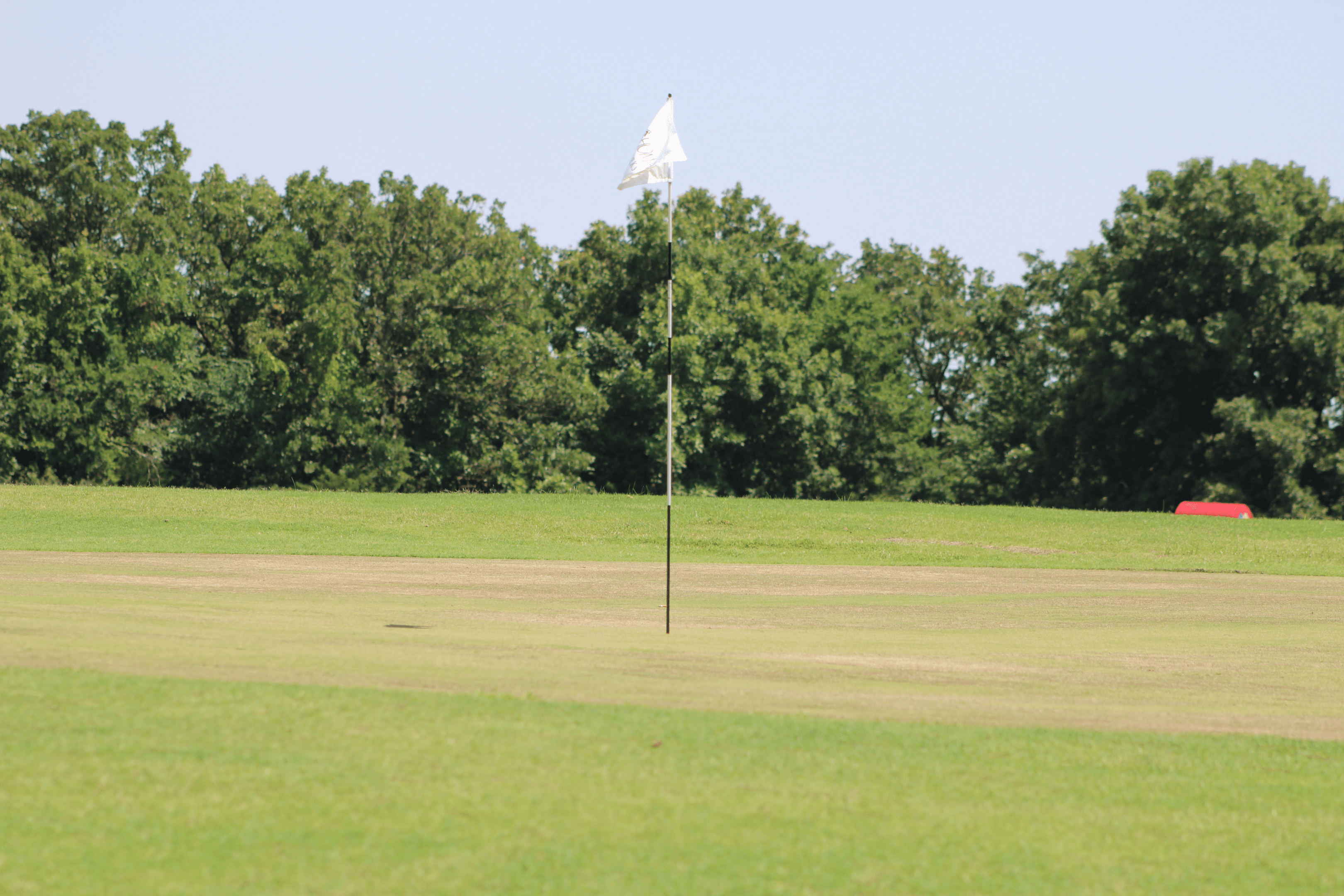Hybrids and irons with irons and hybrids are becoming quite a swamp out there regarding whether you should have irons in your bag or hybrids. The answer depends on your golf game, swing speed, and consistency in ball striking.
The 4 hybrids will have slightly less carry distance, higher ball flight, trajectory, more forgiveness, and are easier to hit from the rough with exceptional turf interaction or off the deck. The 4 iron will give you more shaping ability and a longer, lower golf ball flight but more accuracy and tougher to hit from the rough.
Putting these two side-by-side and looking at the various distinguishing factors will give you a better idea of which you should have and why, as well as taking a look at some exciting survey results showing which is more accurate off the tee and to the green.
4 Hybrid Vs. 4 Iron – Loft Comparison
The purpose of long irons is to get you onto or near the green from a distance, and the four iron for many players has been doing that along with the five fairway wood for many years. As a golf club is typically part of a standard set (4i- PW), most golfers do have a four iron in the bag.
But, as with the three iron and two iron and even the impossible to hit unless you are godly, many golfers struggle to get the ball airborne with the 4 iron, whether from the tee or the deck.
The average loft of a 4 iron these days is around 20 degrees, with some as low as 18 degrees, while the 4 hybrid lofts are between 22 and 24 degrees, which is almost five iron territory.

As a result, the 4 iron will have a lower ball flight, with less spin and longer distance than the 4 hybrids, but the 4 iron will be less forgiving even with game improvement irons than the hybrid.
The hybrid is designed to be easier to hit consistently and get the golf ball in the air from most lies. The sharper profile of the clubhead makes the hybrid better for hitting out of the rough as it interacts with the turf better than the four iron.
Off the deck, the likelihood of getting the ball flying high is greater with the hybrid than with the four iron for an average player, and this is where the critical difference between the hybrids and irons comes into play.
The higher spin of the hybrid will also mean less roll out on the landing, although players with a high swing speed can also generate a good spin from the four iron and get it to land softly, but probably not as softly as off the 4 hybrids, also knowns as a rescue club.
4 Hybrid Vs. 4 Iron – Swing Speed
Since most golfers on the planet play from a 16 handicap or higher, the ball striking ability for many players makes hitting long irons consistently well tricky, so they look for other options.
When the hybrids arrived, their prayers were answered as they could still get good results from off-center hits on their long clubs, and while the distances may not have been as long, the straighter shots using these golf clubs made a difference in scoring.
There is no doubt that the long irons give the better ball-strikers more control in shaping the ball as desired as they inevitably have higher swing speeds – if the hybrids did that to the same extent, we would see far more pros using them.
Players with good swing mechanics and higher swing speeds find great rewards in hitting the long irons like the four iron. Long hybrids like the four hybrids have evened the playing fields giving players with slower swing speeds and lower skill levels the ability to produce more consistent shots in their game.

If you have a driver swing speed of 95 mph or more, you should have no trouble hitting the four iron, while if that swing speed is slower than 95mph, you may be better off with the four hybrids.
4 Iron vs 4 Hybrid – Golf Ball Striking & Control
As a rule, you have more ability and control over shaping a ball with an iron than you do with a hybrid. This is the same with the four iron, and players can shape the ball both ways when required.
However, there could be a tendency to lose the ball to the right from off-center hits on the iron, while the ball would not draw or hook as much from the four iron compared to the 4 hybrids.
This is because the shape of the hybrid clubface tends to be a little more closed at impact to assist in promoting the draw shape, but on a poor swing, the clubface will close that much more, and the hook may become the result.
Hybrids are much more challenging to shape, especially for the fade, but they offer much more forgiveness than their iron counterparts.
So if the hybrids are easier to hit, why do many players still opt for long irons? Because there is some sacred sweetness in hitting a long iron flush and stronger players seek the control from their shots that they cannot get from a hybrid.
By placing the ball in different positions in their stance and slightly altering the release points, a good player can control the height and shape of a four iron better than a 4 hybrid.
This gives a better overall shot dispersion and consistency to target radius on the green than the hybrid would – but for players that struggle with the four iron, the 4 hybrids bring more confidence to their shots and better results.
4 Iron vs 4 Hybrid – Distance
A recent and pervasive study has finally brought some reliable data into the iron vs hybrid argument. So we are going to look at the different distances off the tee and on approach achieved when comparing the four hybrids to the 4 iron.
This data comprised more than 3.8 million rounds and some 200 million shots taken through the Arccos sensors installed in golf club grips.
We will look at separate handicap categories and see how each performed with the different clubs; then, you can find the handicap category you slot into and determine which club would be more suitable.
We will also consider the accuracy in terms of FIR and GIR for both golf clubs from the same study to see where your handicap group was placed and which golf club would be better.
4 Iron vs 4 Hybrid : 0-5 Handicap Group
Distances Off The Tee & Approach Shots
This category was the only one with a measurable difference in distances off the tee between the 4 iron and the 4 hybrid clubs. The 4 iron achieved a distance of 174 yards off the tee, with the four hybrid averaging 170 yards.
On approach shots, the 4 iron was slightly shorter on average, except for the 20+ handicap group, which was somewhat longer. In the 0-5 handicap group, the average distance on approach was 166 yards for the 4 iron against the 168 yards for the four hybrids.
FIR AND GIR Accuracy
The 0-5 handicap group showed that the higher skill level results in higher FIR stats, with the 4 iron achieving 46% FIR vs. the 43.5% FIR for the 4 hybrids. The roles were reversed for the GIR stats, with the 4 hybrid hittings 22% against the 4 iron’s 21%.
If you play in this handicap group, the 4 iron would be a better option as the margins between the two in terms of accuracy are negligible. The longer distances achieved by the 4 iron are more significant, but not dramatically so.
4 Iron vs 4 Hybrid: 6-10 Handicap Group
Average Distance Off The Tee & Approach Shots
In this handicap group, the tee distances came in at an average of 162 yards which is only 4-6 yards less than the handicap group above it. So here, neither club holds an advantage off the tee, and it would be which one feels better for you if this is your handicap group.
With the approach golf shots in this group, the 4 hybrid was longer at 163 yards against the 159 yards of the 4 iron, which is consistent with the 0-5 handicap group results.
FIR & GIR Accuracy
As the handicaps get higher, we tend to see a drop in both distances off the tee and on approach and lower FIR and GIR percentages.
In this handicap group, the FIR percentages were about equal, with the 4 iron coming in marginally higher at 41,93% vs. the 41,54% of the 4 hybrid golf clubs. For all intents and purposes, the FIR stats are equal.
For GIR, the four hybrids proved a little more accurate with 18,9% against 17,5% of the 4 iron, which is congruent with the results from the 0-5 handicap group, where the hybrid is slightly more consistent with lower GIR percentages.
11-15 Handicap Group (Average Golfer)
Distances Off The Tee And Approach Shots
As the handicaps increase, the distances fall, which is evident in this average golfer group. The 4 iron achieved 151 yards off the tee, with the four hybrids slightly ahead at 152 yards.
On approach shots, the four hybrids were half a club length further than the 4 iron at 155 yards vs. the 150 yards, respectively. This is due to the decreasing ball-striking ability as the handicap level increases and the forgiveness of the hybrids becomes more evident.
FIR & GIR Accuracy
The FIR stats in this handicap group showed that the fo4 ur iron took top honors with 38% against the 37% of the 4 hybrids. If you are in this handicap group, the choice of either would be fine as the difference off the tee would be marginal.
For GIR stats in this handicap group, the 4 hybrids took the honors with 15,4% against the 4 iron’s 13,94%, and again considering the narrow margins, these clubs are almost equal in terms of maximum distance and accuracy.
16-20 Handicap Group
Distances Off The Tee And Approach Shots
With the tee shot, both clubs came in equal at 140 yards, and it should be noted here that this is a difference of 30 yards between this handicap group and the 0- handicap group. This is where ball-striking ability comes into play.
On approach, the 4 hybrid won out with 144 yards vs. 141 yards for the 4 iron. Considering that this is only a 3-yard difference, the club choice is optional if you play in this handicap group.
FIR & GIR Accuracy
As far as accuracy off the tee goes, both clubs were equal again at 35%, and for the GIR stats, the four hybrids proved a little more accurate than the 4 iron at 11,95% compared to 10.76%.
20+ Handicap Group (High Handicappers)
Distances Off The Tee And Approach Shots
In the final handicap group, the 4 iron came out slightly on top with an average of 130 yards off the tee vs. the 128 yards of the four hybrids. On approach shots, the 4 iron trumped again with 132 yards vs. the 131 yards of the four hybrids, albeit it very similar distance from each club.
FIR & GIR Accuracy
For the FIR category, the four hybrids proved more accurate with 34.5% vs. 33.2% of the four iron, and for GIR, the hybrid achieved 9.4% vs. the 8.6% of the 4 iron.
Comparative Analysis
Overall, and even in the lowest handicap groups, these two clubs are very similar in performance and accuracy, and it would come down to which club you feel more confident with when you’re on the golf course.
Remember that the four hybrids will be easier to hit out of the rough and get airborne from the fairway, but the 4 iron will give you more control in terms of shaping-so depending on your game, you can decide which club would be the better option.
Conclusion
Unlike other iron vs hybrid comparisons, the 4 hybrid and 4 iron are very similar. It would be better to take both to each club’s range and various models if possible and hit some shots with each to see which suits your swing the best.
Whether you end up with the 4 hybrid or the 4 iron, you don’t have the option of carrying both, as they each offer the same degree of performance for golfers in most handicap categories.
- Should Tee Boxes Be Level? - January 23, 2024
- 3 Hybrid Distance - November 15, 2023
- Innovations in Golf Mobility: An In-depth Review of Top Golf Scooters - October 12, 2023
